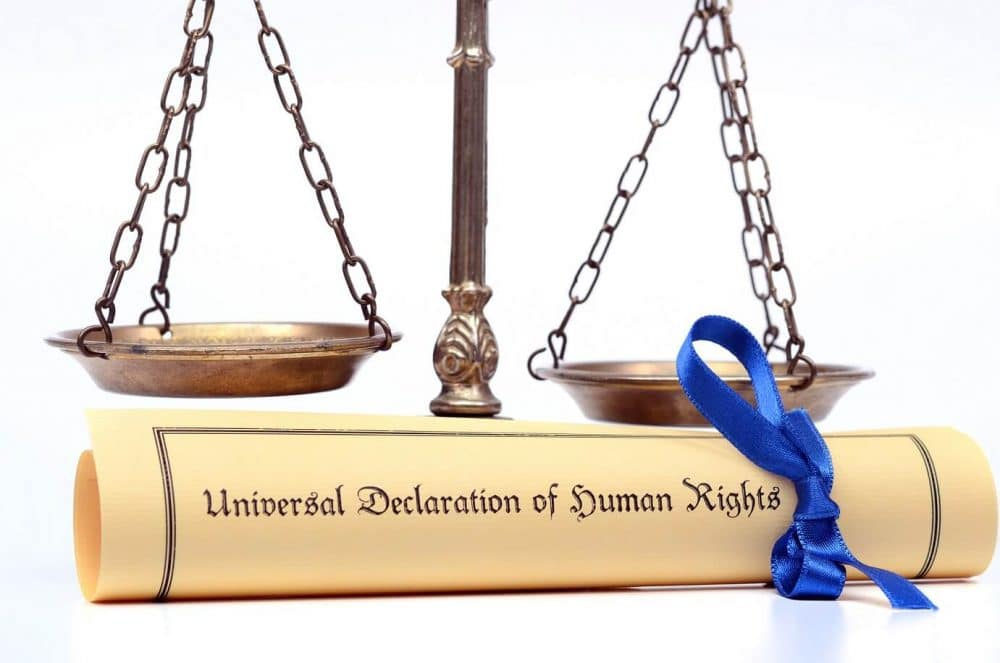The most translated document in the world, according to the Guinness World Records, is the Universal Declaration of Human Rights (UDHR).
Guinness World Records is a reference book that lists and documents world records, both human achievements and the extremes of the natural world.
Universal Declaration of Human Rights (UDHR) Document
Adopted by the United Nations General Assembly on December 10, 1948, the UDHR holds immense significance.
It emerged in the aftermath of World War II when the international community sought to prevent the recurrence of atrocities and promote the inherent dignity and worth of every human being.
Its global importance is evident in its aim to address principles and rights that are considered fundamental to all individuals, transcending national boundaries and cultural differences.
The linguistic diversity of the UDHR is a testament to its recognition and influence. It has been translated into over 500 languages, making it one of the most widely translated documents in history.
This extensive translation effort underscores the commitment to making the principles of the UDHR accessible to diverse populations, regardless of language barriers. Moreover, the UDHR’s impact goes beyond mere translation numbers.
The UDHR has profoundly influenced the development of international human rights law, national legal systems, and policies worldwide. It serves as a reference point for advocacy, education, and awareness-raising initiatives on human rights.
Translations of the UDHR have played a vital role in promoting human rights awareness globally, contributing to the establishment of legal frameworks and the protection of individuals’ rights in various countries.
The multilingual nature of the UDHR has also contributed to the preservation and development of languages, fostering linguistic diversity and promoting cultural understanding.
Guidelines for Translating a Document into Different Languages
When it comes to translating a document into different languages, certain guidelines can help ensure accuracy, clarity, and cultural appropriateness. Here are some essential guidelines to consider:
Understand the Target Audience
Before beginning the translation process, it’s crucial to understand the target audience. Consider their cultural background, language proficiency, and any specific nuances or sensitivities that may exist. This understanding will inform your approach and help you tailor the translation to effectively communicate with the intended readers.
Maintain Clarity and Accuracy
One of the key objectives of translation is to convey the original meaning of the document accurately. Strive for clarity in your translations by using simple, concise language that is faithful to the source text. Avoid ambiguous phrases or overly complex sentence structures that could confuse readers.
Adapt to Cultural Differences
Translations should be culturally sensitive and adapt to the customs, values, and norms of the target language and culture. Pay attention to idiomatic expressions, metaphors, and cultural references in the source text, and find appropriate equivalents in the target language to ensure the translated document resonates with the intended audience.
Maintain Consistency in Terminology
Establish and adhere to consistent terminology throughout the document. This is particularly important for technical or specialized content where accuracy and precision are paramount. Develop a glossary of key terms and ensure their consistent use across the document and any future translations or revisions.
Proofread and Edit
After the initial translation, proofread and edit the document to ensure accuracy, language fluency, and adherence to the guidelines. Pay attention to grammar, punctuation, and spelling errors. Additionally, review the document from the perspective of the target audience to ensure its clarity and effectiveness.
Seek Feedback and Review
Whenever possible, involve native speakers or experts from the target language to review the translated document. Their insights and feedback can help identify any potential issues or areas for improvement, ensuring the translation aligns with the linguistic and cultural expectations of the target audience.
Final Thoughts
The UDHR holds the title of being the most translated document in the world, which speaks to its importance and relevance. The document has been translated into more than 500 languages, which is no easy task.
Translating a document into different languages requires a great deal of care, attention, and expertise. The translation should not only be faithful to the original document but also reflect the unique cultural and linguistic expectations of the target audience.

